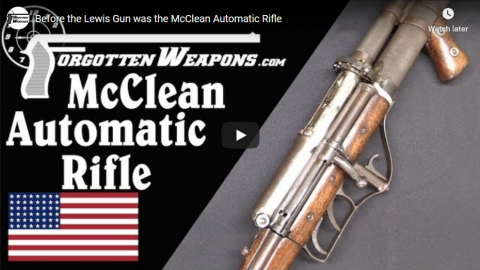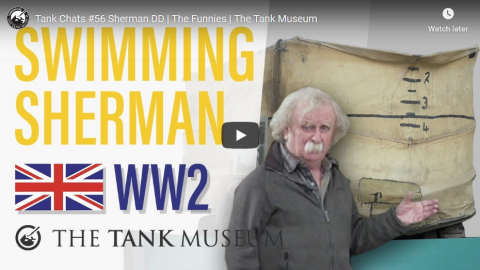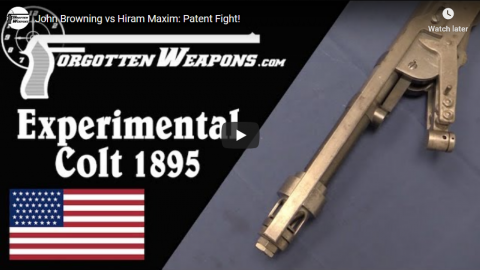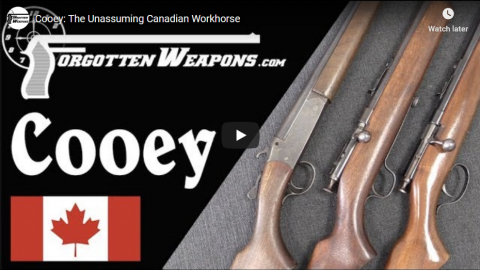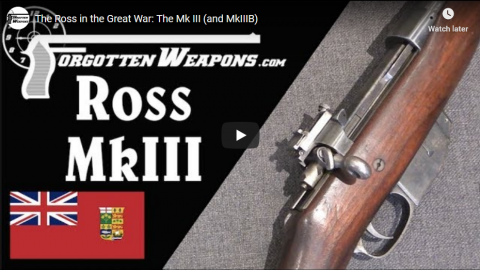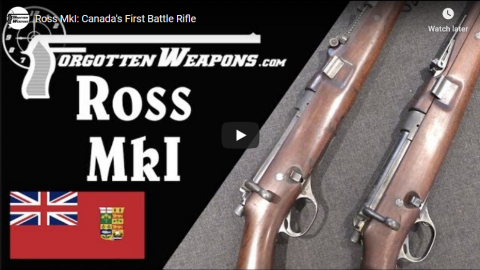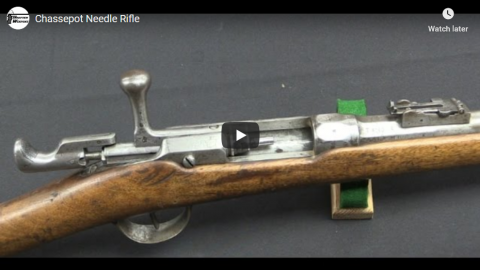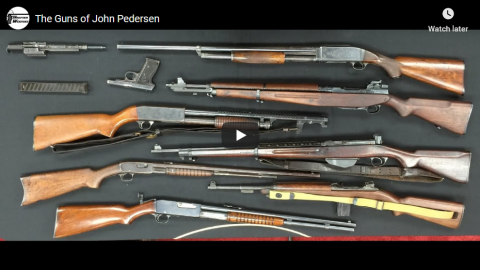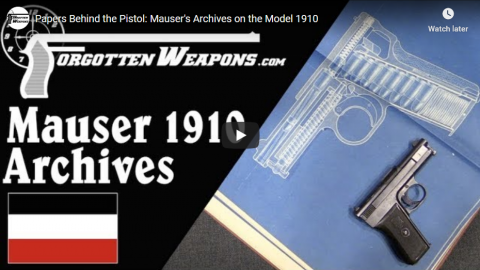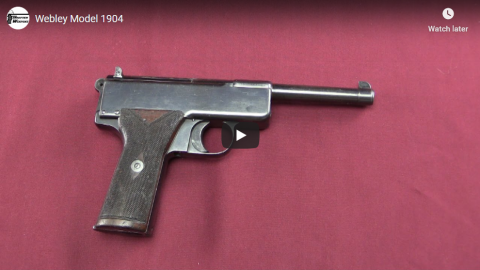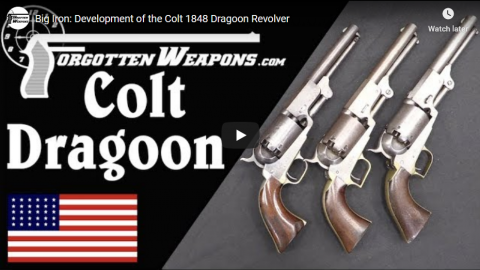Real Engineering
Published 31 Aug 2018Patreon:
https://www.patreon.com/user?u=282505…
Instagram:
https://www.instagram.com/brianjamesm…
Twitter:
https://twitter.com/thebrianmcmanus
Discord:
https://discord.gg/s8BhkmNThank you to AP Archive for providing footage: https://www.youtube.com/channel/UCHTK…
Get your Real Engineering shirts at: https://standard.tv/collections/real-…
References:
[1] https://www.thoughtco.com/world-war-i…
[2] http://rwebs.net/avhistory/history/ze…
[3] http://aboutjapan.japansociety.org/im…
[4] https://www.history.com/news/the-akut…
[5] https://www.japanpowered.com/history/…
[6] https://www.warbirdforum.com/sakai.htmCredits:
Narrator/Director: Brian McManus
Co-Director: Mike Ridolfi (https://www.moboxgraphics.com/)
3D Animations: Eli Prenten (http://eliprenten.com/)
Research: Stephanie Sammann (https://www.stephanie-sammann.com/)
Sound: Graham Haerther (https://haerther.net/)
January 4, 2020
The Rise and Fall of the Japanese Zero
QotD: “Starchitects”
In my school, the status of “Corb” (as we were encouraged to affectionately call him) as a hero was a given, and dissenting from this position was risky. Such is the power of group-think which universities are, sadly, no less prone to than anywhere else. To be fair, nobody was still plugging the megalomaniac aspect of their hero; his knock-down-the-center-of-Paris side. All those undeniably God-awful tower blocks for “rationally” housing “the people” that sprang up all over Europe in his name? Well, we were assured, they could not be blamed on Corb; it was just that his more pedestrian architectural acolytes hadn’t properly understood what he had meant. In addition to the persistence of Corb-hero worship itself, two cancerous aspects of its radical mindset have survived intact in our schools of architecture.
One is the idea that an architect aspiring to greatness must also aspire to novelty. It is this imperative to “innovate” that underpins the diagrammatic design concepts of the Deconstuctivists. There is of course nothing wrong with innovation per se; it is the knee-jerk compulsion to innovate, or “reinterpret” — as a kind of moral imperative — that is the mid-20th-century aesthetic legacy. To be fair to the profession, I would come to the defense of much innovative public and commercial architecture, most of it by architects that the public has never heard of. Tragically though, these unpretentious and unsung essays in steel, glass, and masonry have been eclipsed in the public imagination by the “starchitect” bling that is currently turning the centers of our great cities into a collection of (in James Stevens Curl’s memorable phrase) “California-style roadside attractions”.
The other cancer is the idea that building design has sociological, psychological, and macro-economic dimensions that the architect — simply by virtue of being an architect — is competent to judge. What really matters to your average architecture student is drawing — which is fine, and just as it should be, until the vain idea emerges that their drawings represent some kind of implicit vision for mankind. At my school, any student’s design presentation had to include a verbal rationale — often post hoc and invariably half-baked — of how the form, massing, and materials of the design are expressive of such imponderables as the supposed psychological “needs” and “aspirations” of the users and the wider “community” that the building is to serve. The students were simply reciting the bogus language of their tutors — in which buildings might be said to be “fun,” “thought provoking,” “democratic,” “inclusive” and other such nonsense.
Graham Cunningham, “Why Architectural Elites Love Ugly Buildings”, The American Conservative, 2019-11-01.
December 14, 2019
Huot Automatic Rifle: The Ross Goes Full Auto
Forgotten Weapons
Published 13 Dec 2019http://www.patreon.com/ForgottenWeapons
Cool Forgotten Weapons merch! http://shop.bbtv.com/collections/forg…
During World War One, Joseph Alphonse Huot, a Canadian machinist and blacksmith living in Quebec, designed a conversion of the Ross MkIII rifle to become an automatic rifle. The Ross was the standard issue Canadian rifle at the beginning of the war, and Huot wanted to find a way to economically provide Canadian forces with an automatic weapon. His conversion functioned by mounting a gas piston onto the side of the Ross barrel, adding a large action cover and 25-round drum magazine, and a Lewis-style cooling shroud over the barrel.
In initial testing with the Canadian army, the Huot performed well. It was seriously considered for adoption, but had to undergo British testing and approval before that could happen. In British testing (by now near the end of the war), it was found to run well enough and have some positive attributes, but not sufficient to justify replacement of the Lewis Gun. It was rejected, and the Canadian Corps finished the war with the Lewis instead. Huot had spent several years privately developing the weapon and two more working on salary for the Canadian military, and had gone into considerable personal debt for the project. He had secured a deal to receive royalties on production, but that of course came to naught when the design was rejected. Ultimately, he was compensated $25,000 in 1936 (of the $36,000 he claimed to have spent).
Only five of the guns were made in total, with four known to still exist. Two of them are in Ottawa at the Canadian War Museum and one in the Seaforth Highlanders Museum in Vancouver and one in the Army Museum in Halifax.
Thanks to the Canadian War Museum for providing me access to film this Huot for you!
Contact:
Forgotten Weapons
6281 N. Oracle #36270
Tucson, AZ 85704
December 10, 2019
Before the Lewis Gun was the McClean Automatic Rifle
Forgotten Weapons
Published 18 Oct 2019This is Lot 1158 in the upcoming October Morphy Extraordinary auction.
Samuel McClean was a medical doctor from Iowa who began tinkering with firearms designs in 1889, and formed the McClean Arms Company in 1896. He was an intelligent and talented designer, but never quite managed to get a gun good enough for military acceptance. His work included bolt actions rifles, self-loading shoulder rifles, machine guns, and self-loading cannons. By 1910 his company had gone bankrupt twice, and he was forced out by his investors. Isaac Newton Lewis was brought in, and turned McClean’s initial concepts into the ultimately-successful Lewis Machine gun.
However, McClean made one least attempt to produce his own gun after World War One. This is the McClean Automatic Rifle, and it was tested by the US Navy in 1919 – and rejected. This pattern uses an operating system similar to McClean’s early work, and thus also quite similar to the Lewis gun. Instead of two large locking lugs, however, it has several dozen small lugs in two rows on each side of the bolt. The gas piston is also huge by modern standards; over an inch in diameter. The gun is unfortunately missing its magazine Still, it is the only example of the type known to exist, and probably the only one ever manufactured.
http://www.patreon.com/ForgottenWeapons
Cool Forgotten Weapons merch! http://shop.bbtv.com/collections/forg…
Contact:
Forgotten Weapons
6281 N. Oracle #36270
Tucson, AZ 85704
December 1, 2019
Tank Chats #56 Sherman DD | The Funnies | The Tank Museum
The Tank Museum
Published 7 Sep 2018Another episode in the Tank Chats Funnies Specials, with David Fletcher looking at the weird and wonderful vehicles of 79th Armoured Division led by Major General Percy Hobart, known as “Hobart’s Funnies”.
The Sherman DD, or Duplex Drive, was a term applied to Sherman tanks modified for amphibious operations. DD tanks were used by American, British and Canadian forces in WW2 on D-Day, 6 June 1944; by the Americans again in the south of France and by the Americans and British during the Rhine crossing.
Support the work of The Tank Museum on Patreon: ► https://www.patreon.com/tankmuseum
Or donate http://tankmuseum.org/support-us/donateVisit The Tank Museum SHOP: ► https://tankmuseumshop.org/
Twitter: ► https://twitter.com/TankMuseum
Tiger Tank Blog: ► http://blog.tiger-tank.com/
Tank 100 First World War Centenary Blog: ► http://tank100.com/ #tankmuseum #tanks #tankchats
November 27, 2019
John Browning vs Hiram Maxim: Patent Fight!
Forgotten Weapons
Published on 25 Sep 2019http://www.patreon.com/ForgottenWeapons
Cool Forgotten Weapons merch! http://shop.bbtv.com/collections/forg…
When John Browning designed his Model 1895 machine gun with its rotary-lever gas operation system, Hiram Maxim filed suit claiming patent infringement. Maxim had filed quite broad patents covering gas pistons operation, but specifically in a linear format. Browning and Colt (who had the license to manufacture the Model 1895 machine gun) countered that the swinging lever was a different system, and thus not covered by Maxim’s patents. More to the point, they claimed that the gun would work without using a gas piston at all – and built this experimental model using a gas trap or muzzle cap system instead to prove the point.
Ultimately, the genesis of the fight was moot (the Maxim did not run well in 6mm Lee Navy, and would not have won a US Navy contract regardless of the Colt/Browning gun), and the court ultimately decided in favor of Colt and Browning. But this gun remains from the incident…
Contact:
Forgotten Weapons
6281 N. Oracle #36270
Tucson, AZ 85704
November 8, 2019
Cooey: The Unassuming Canadian Workhorse
Forgotten Weapons
Published 6 Nov 2019http://www.patreon.com/ForgottenWeapons
Cool Forgotten Weapons merch! http://shop.bbtv.com/collections/forg…
Cooey is a brand name that will be immediately recognized by Canadians, but pretty much unknown everywhere else. Founded in 1903 by Herbert Cooey, the company would produce a series of simple and practical firearms that became hugely popular and common in Canada. The basic models were the single-shot .22 Model 39, the bolt action magazine-fed .22 Model 60, and the break action single-shot Model 84 shotgun (and the Model 64 semiautomatic .22, made after the company was sold out of the Cooey family). These are not particularly exciting firearms, but they are ubiquitous across Canada, having served Canadian families reliably for a
century now.Contact:
Forgotten Weapons
6281 N. Oracle #36270
Tucson, AZ 85704
November 4, 2019
The Ross in the Great War: The Mk III (and MkIIIB)
Forgotten Weapons
Published 1 Nov 2019http://www.patreon.com/ForgottenWeapons
Cool Forgotten Weapons merch! http://shop.bbtv.com/collections/forg…
While the MkII (1905) iteration of the Ross rifle had resolved most of the major mechanical problems from the MkI, it retained a number of characteristics that the Canadian (and British) military was not fond of. In particular, it was not suited to the use of stripper clips. Starting with experimentation on sporting rifles, Ross substantially redesigned the action for the final 1910 pattern – aka the MkIII.
The MkIII used a rotating bolt as before, but with six locking lugs in two rows of three, instead of two large lugs as the MkI and II. The magazine was replaced by a conventional single-stack design, with a stripper clip guide built into the receiver, and with a nicely adjustable rear aperture sight. This would be the model to equip the Canadian infantry who went to Europe to fight in 1914 and 1915 – and it is there that a new set of problems would begin to plague the Ross.
In keeping with its sporting legacy and reputation for outstanding accuracy, the MkIII Ross was made with a rather tight chamber, optimized for the excellent-quality Canadian production .303 ammunition. Britain had been forced to massively increase ammunition supply as the war lengthened, and British standards had widened to accept ammunition that was really of rather questionable quality. The SMLE rifles used by British forces had chambers made to accommodate this, but the Rosses did not. Canadian ammunition was supposed to follow the Canadian troops, but it was usually diverted to other services because of its high quality, and the Canadians left with ammo that was difficult to chamber or extract in the Ross.
This led to men having to beat open rifle bolts, which led to damage to locking lugs, in a viscous circle of escalating problems. By the time of the German gas attack at Ypres, Canadians were ditching their Rosses for Lee Enfields by the thousands, despite specific orders to the contrary. General Haig finally had enough of the issues, and ordered the Ross removed from combat in 1916, to be replaced by the SMLE (which was finally available in sufficient numbers to arm the Canadian troops).
Contact:
Forgotten Weapons
6281 N. Oracle #36270
Tucson, AZ 85704
November 1, 2019
Ross MkI: Canada’s First Battle Rifle
Forgotten Weapons
Published 28 Oct 2019http://www.patreon.com/ForgottenWeapons
Cool Forgotten Weapons merch! http://shop.bbtv.com/collections/forg…
Sir Charles Ross was heir to a very wealthy Scottish family, and was a talented if temperamental engineer. He took an interest in firearms and their design, and worked with American and English connections to produce a line of his own straight-pull sporting rifles. Upon returning from the Boer War he looked to expand into the military market.
At this same time, the Canadian government was looking to replenish its arms supplies after the war, and requested Enfield rifles form the British. The request was turned down, as Britain did not have enough supply to spare any for the Canadians. The Canadians were expected to construct their own factory to make rifles of he standard British pattern. Well, the Canadian government was not eager to invest that sort of capital into the project. They investigated buying arms elsewhere, but the consensus was that Canada’s armaments should come from either Britain or from within Canada itself. No good solution was apparent until Sir Charles Ross stepped in.
Ross offered to fund the construction of a factory himself, and use Canadian labor and industry to manufacture Ross rifles for the military. This seemed like an excellent solution — for zero initial cash outlay, the Canadian government would get rifles both designed and produced domestically! The rifles would be chambered for the standard .303 British cartridge, thus handling the British objections about arms compatibility (Ross pointed out that the British themselves used something like 7 different patterns of rifle at the time).
In 1902, Ross and the Canadian government signed a contract for 12,000 rifles to be made in 1903 and 10,000 per year thereafter, at the price of $25 each. In addition to the Canadian military, the Royal North West Mounted Police also adopted the new Ross rifle. Deliveries did not actually begin until 1905, and when they did plenty of disturbing problems arose. The rifles proved fragile and unreliable — and a weak bolt latch periodically allowed the bolt to fall completely out of the rifle on parade drill — not a good start!
Only 10,000 of the Mark I Ross rifles were made, and an improved Mark II pattern would follow as quickly as Ross could make it a reality.
Many thanks to the private collectors who allowed me access to their rifles to make this video!
Contact:
Forgotten Weapons
6281 N. Oracle #36270
Tucson, AZ 85704
October 26, 2019
Chassepot Needle Rifle
Forgotten Weapons
Published on 30 May 2015Sold for $1,150 (with three other rifles).
The Chassepot was the French answer to the Dreyse needle rifle, and also the only other needlefire rifle to see major military service. It was adopted in 1866 and served as a primary French infantry rifle until being replaced by the 1874 Gras rifle, which was basically a conversion of the Chassepot to use self-contained brass cartridges. The concept of a needle rifle is that of a breech loading rifle using paper cartridges. A primer was set in the base of the cartridge (inside the paper), and upon firing the needle-like firing pin would pierce the paper cartridge and detonate the primer and powder charge. The system always had trouble with sealing the breech, but was still a significant improvement over muzzleloading rifles.
October 23, 2019
The Guns of John Pedersen
Forgotten Weapons
Published on 10 Apr 2015Sold for:
$34,500 (Pedersen Device)
Failed to sell (Model 10 shotgun)
(Model 12 in a later auction)
$1,610 (Model 14 carbine, with one other rifle)
(Military Ithaca 37 in a later auction)
$2,588 (Remington 51 pistol with one other pistol)
(Irwin-Pedersen M1 Carbine in a later auction)
$16,100 (Vickers-Pedersen rifle)
$74,750 (Pedersen GY rifle)John Pedersen was one of the more prolific and successful gun designers in American history, having even been described by John Moses Browning as “the greatest gun designer in the world”. And yet, many people only know about Pedersen from his unsuccessful toggle-locked rifle or his WWI Pedersen Device that never saw action. In truth, Pedersen’s work included a number of very successful sporting rifles and shotguns that many shooters would still recognize today. While looking through the guns at Rock Island on my most recent trip there, I realized that they had examples of virtually every one of Pedersen’s guns — so I figured I should do an overview of the man’s work.
October 22, 2019
Papers Behind the Pistol: Mauser’s Archives on the Model 1910
Forgotten Weapons
Published 21 Oct 2019http://www.patreon.com/ForgottenWeapons
Cool Forgotten Weapons merch! http://shop.bbtv.com/collections/forg…
Courtesy of the Paul Mauser Archive, we have a very cool opportunity to look at the documentation and paperwork behind a production pistol design, from beginning to commercial sales. This sort of documentation is rare for pre-WW1 German small arms in general, and the Mauser Model 1910 pistol is a very rare example of a complete set of archival papers surviving. So, what we can look at is the whole development process from behind the scenes at Mauser. Initial design drawings, blueprints, glass-plate photography, internal assembly instructions, costing, corporate-level final approval, marketing, and final print manuals. Thanks to Mauro Baudino for supplying these original documents for me to show you!
The Paul Mauser Archive (http://www.paul-mauser-archive.com/in…) is a wealth of information for researchers, and make sure to check out the recent book on Mauser coauthored by Mauro Baudino and Gerben van Vlimmeren:
Contact:
Forgotten Weapons
6281 N. Oracle #36270
Tucson, AZ 85704
October 20, 2019
Webley Model 1904
Forgotten Weapons
Published on 24 Feb 2015Sold for $109,250.
The Model 1904 was basically the first working automatic pistol made by Webley (there was a 1903 toolroom experiment, but it didn’t really work). Like all the Webley automatic that would follow, it was designed by William Whiting. The 1904 was the company’s first effort at making a semiautomatic sidearm for the British military, so it was chambered for the .455 cartridge (a special rimless version made by Kynoch, after early experiments using the .455 rimmed revolver ammunition caused lots of problems stacking in magazines). It is a rather huge handgun, and uses a short recoil mechanism with two separate locking blocks. This particular one is s/n 23 – very few were made before it was rejected in military trials and Webley redirected its efforts toward smaller commercial pistols.
http://www.forgottenweapons.com
Theme music by Dylan Benson – http://dbproductioncompany.webs.com
October 8, 2019
Big Iron: Development of the Colt 1848 Dragoon Revolver
Forgotten Weapons
Published on 23 Aug 2019RIA on YouTube: https://www.youtube.com/user/RockIsla…
RIA on Instagram: https://www.instagram.com/rockislanda…Sam Colt’s first foray into firearms manufacturing did not end well — after 6 years, he went broke and shut down production of Paterson revolvers and revolving long guns. His guns were too expensive, too fragile, and too underpowered to become a commercial success. They did make an impression on some people, however, and a few years later Colt would work with Captain Samuel Walker of the Texas Rangers to develop a much larger and more robust revolver. The US military purchased 1,000 of these Model 1847 “Walker” revolvers, and this set Colt back on the path to financial success.
Colt contracted with the Whitneyville Armory to produce his Walkers, and part of the contract was that Colt would own any tooling developed for the manufacturing process. The Walker was successful enough that it spurred a second 1,000-pistol order form the government, and Colt used the Walker tooling along with his newfound capital to set up shop in Hartford CT producing guns himself. He immediately made a number of changes to the Walker pattern, primarily making is a bit shorter and lighter (4lb 2oz, with a 7.5 inch barrel), reducing the powered charge to 50 grains (the Walker had used 60 grains), and improving the loading lever retention latch. This would become known as the Model 1848 Dragoon revolver.
Between 1848 and 1860, a total of 20,700 Dragoons were made, 8,390 of them for the US military. There would be three main variations, called the first, second and third types today. In today’s video, I will show you all three and explain how they differed from each other — and we will also take a look at a rare long-barreled version as well as one with an original shoulder stock.
http://www.patreon.com/ForgottenWeapons
Cool Forgotten Weapons merch! http://shop.bbtv.com/collections/forg…
Contact:
Forgotten Weapons
PO Box 87647
Tucson, AZ 85754
October 2, 2019
Marston 3-Barrel Selectable Pocket Derringer
Forgotten Weapons
Published on 18 Aug 2019RIA on YouTube: https://www.youtube.com/user/RockIsla…
RIA on Instagram: https://www.instagram.com/rockislanda…William Marston was born in the UK in 1822 and emigrated to the US in the 1830s with his father, who was a gunsmith. William became a naturalized citizen in 1843, and in 1844 went to work for his father in the family business. He would later open his own shop, and became successful making a wide variety of firearms — mostly concealable pocket pistols — until his death in 1872.
This is one of his 3-barrel derringers, with a pretty neat auto-indexing system. This one is in .32 rimfire with 3″ barrels, although 4″ barrels and .22 rimfire versions were also made. Production began in 1858, but really picked up with the addition of an extractor in 1864. That improved model would see some 3300 examples made.
http://www.patreon.com/ForgottenWeapons
Cool Forgotten Weapons merch! http://shop.bbtv.com/collections/forg…
Contact:
Forgotten Weapons
PO Box 87647
Tucson, AZ 85754



